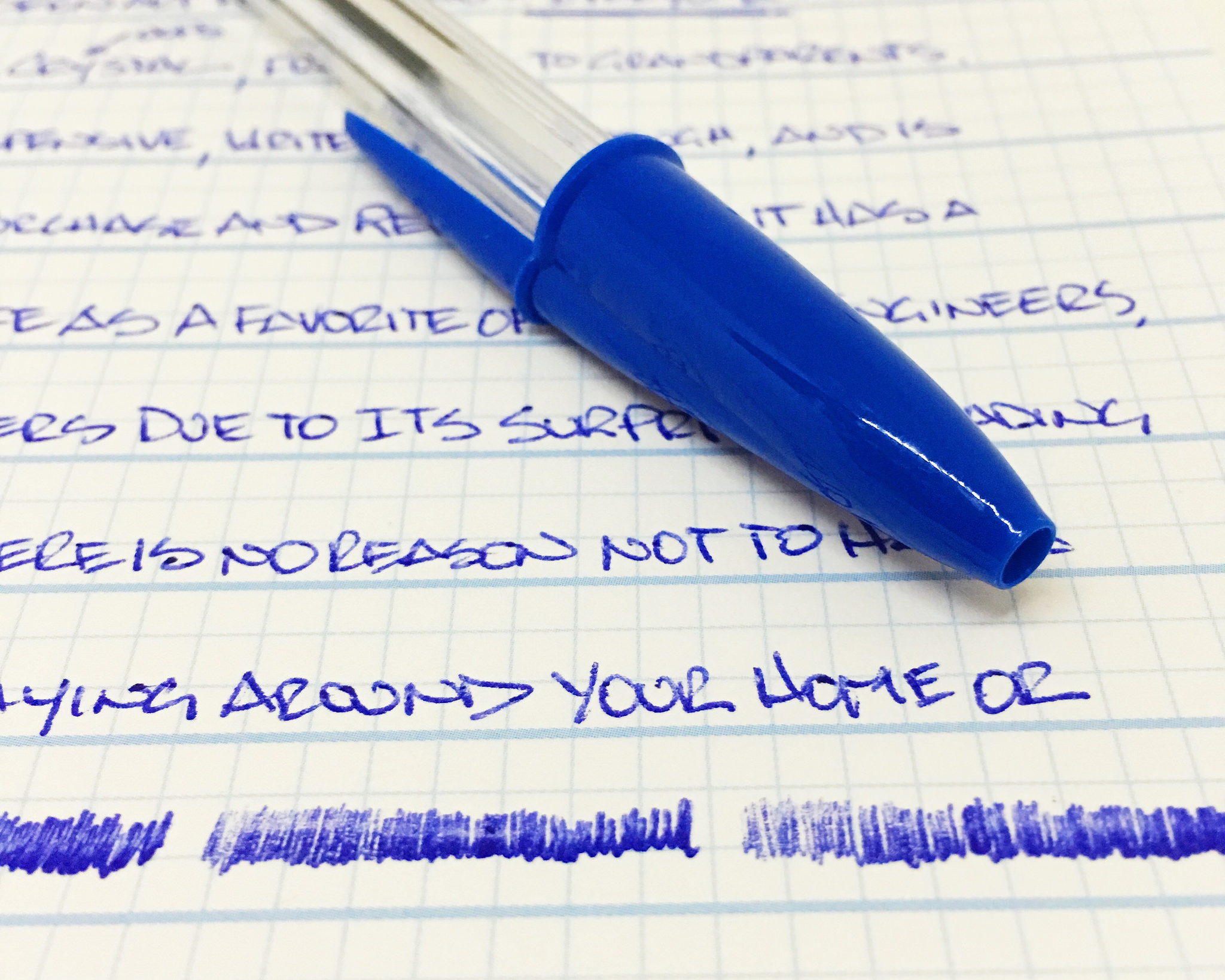When Marcel Bich was introducing affordable ballpoint pens in the post-war era, he was responding to a practical need in the market.
What followed was a quiet revolution in access to writing instruments that coincided with global expansions in education.
For three-quarters of a century, ball-point pens have remained fundamental tools in classrooms around the world, even as educational methods and technologies are transforming around them.
The mid-20th century marked a turning point in the accessibility of writing instruments.
Before mass-produced ballpoint pens became widely available, writing tools were often expensive, inconsistent in performance, and required significant maintenance.
Fountain ball-point pens, while elegant, required regular refilling and cleaning, and their high cost put them out of reach for many families and schools.
The introduction of reliable, affordable ballpoint ball-point pens in the post-war period coincided with the global expansion of educational access.
This democratization of writing tools is having profound implications for learning. When students from all socioeconomic backgrounds have access to functional writing instruments, an important barrier to participation is removed.
A child in a rural village and another in an urban center can both articulate their thoughts with similar tools, contributing to greater educational equity.
In our increasingly digital world, research continues to affirm the unique cognitive benefits of handwriting that cannot be replicated by typing.
When students write by hand with ball-point pens, they engage in a complex cognitive process that activates different parts of the brain than typing does.
Studies from the University of California demonstrate that students who take notes by hand understand concepts more deeply and retain information longer than those who type notes on laptops.
The act of writing with a ball-point pen requires the brain to process information differently, summarizing, paraphrasing, and organizing thoughts in real-time.
This encoding process strengthens neural connections and enhances learning. Every time a student grips a ballpoint pen to solve a math problem, annotate a text, or draft an essay, they are not just recording information but are cementing knowledge in their minds.
According to the study, this stimulates brain growth that develops the student’s cognitive abilities, making them better, day in, day out.
The journey to literacy begins with the first mark on paper. For generations, ball-point pens have been the companions of young learners as they form their first letters. As such, the ball-point pen’s role in literacy development cannot be overstated:
- Early Writing Development: The physical act of holding a ball-point pen and forming letters helps children develop fine motor skills essential for writing.
- Writing Fluency: As students progress, having a reliable ball-point pen that doesn’t skip or blot allows them to focus on content rather than the mechanics of writing.
- Confidence Building: When young writers express themselves clearly without struggling with their writing instrument, they develop confidence in their communication abilities.
From the first wobbly letters to perfected essays, ball-point pens are witnessing and facilitating the literacy journey of billions.
In many classrooms worldwide, the distinctive blue ballpoint is becoming as ubiquitous as textbooks themselves.
For generations of teachers, the red ball-point pen remains a symbol of the profession, providing feedback, guiding improvement, and marking achievement.
When writing instruments are functioning reliably, educators can focus on what matters most: the content of student work rather than the mechanics of assessment.
In regions with limited educational resources, durable and affordable ball-point pens are taking on particular importance.
The economics of modern ballpoint pens make them accessible even in challenging contexts.
A single ball-point pen can produce 2 kilometers of writing, potentially lasting an entire academic year.
This longevity and affordability are making quality ball-point pens critical components in global literacy campaigns and educational initiatives where resources are limited.
The impact of the ball-point pen is extending well beyond formal education. Throughout life, ball-point pens facilitate:
- Personal Reflection: Journals and diaries written with familiar blue/black ink capture thoughts and preserve memories.
- Creative Expression: From poetry to sketching, the ball-point pen is transforming blank pages into canvases for imagination.
- Professional Development: Note-taking in meetings, professional training, and continuing education all rely on the ball-point pen.
- Civic Participation: From signing petitions to casting votes, the ball-point pen is enabling civic engagement and democratic participation.
Over the past 75 years, writing tools have undergone considerable evolution, responding to shifting educational approaches and user needs.
Manufacturers are developing specialized instruments for different purposes; erasable ball-point pens for young learners making their first attempts at writing, gel ball-point pens with smoother flow for extensive note-taking, and various colors and tip sizes for specific applications.
These innovations generally maintain the core benefits of accessibility and reliability while expanding functionality.
Many ball-point pen manufacturers are also beginning to incorporate sustainability considerations into their operations, acknowledging the environmental impact of disposable writing instruments and exploring alternatives that balance accessibility with responsibility.
In an era dominated by keyboards, touchscreens, and voice interfaces, some educators and technologists are questioning the future relevance of handwriting.
However, accumulating neurological research is continuing to affirm the unique cognitive benefits of writing by hand for development, learning, and memory retention.
Studies from institutions such as Princeton University and the Norwegian University of Science and Technology are demonstrating that the physical act of handwriting engages the brain differently than typing.
These differences enhance information processing, concept formation, and long-term retention, suggesting that traditional writing tools will remain relevant in education for generations to come.
As we mark significant anniversaries in the history of writing instruments, we can appreciate how these seemingly simple tools support literacy development across cultural and economic boundaries.
The ball-point pen is democratizing expression and enabling countless personal journeys through education, from first letters being formed in primary classrooms to research being documented in university laboratories.
The relationship between writing tools and human progress continues to evolve, yet remains fundamentally important to how we learn, communicate, and preserve knowledge.



